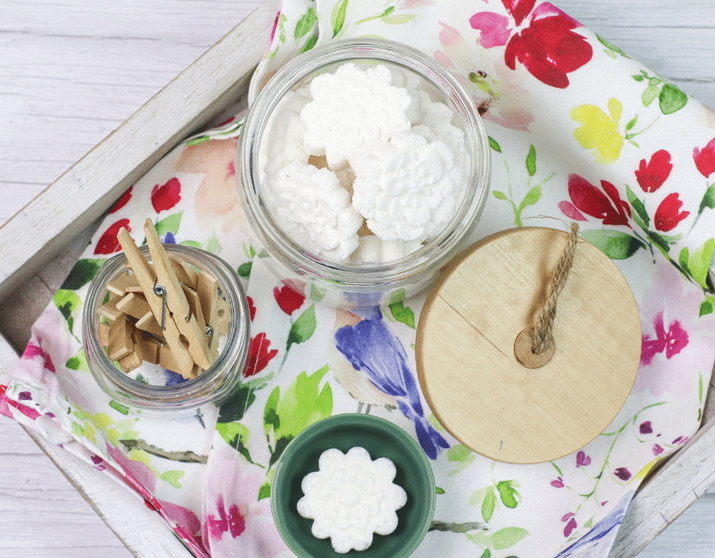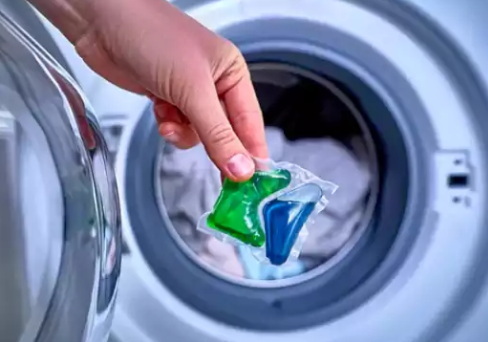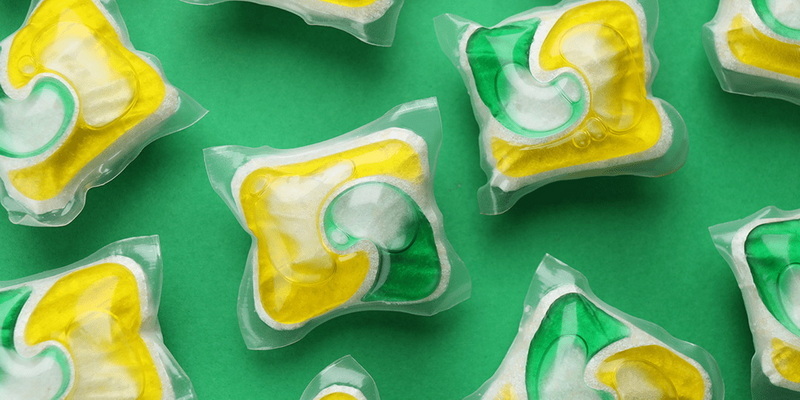Dongguan UFine Daily Chemical Co.,Ltd.
- All
- Product Name
- Product Keyword
- Product Model
- Product Summary
- Product Description
- Multi Field Search
Views: 222 Author: Tomorrow Publish Time: 10-29-2025 Origin: Site











Content Menu
● Extended method and best practices
● Pod quality and performance optimization
● Alternative formulations for different needs
● Environmental and economic considerations
● Common issues and troubleshooting
● Economic and scalability considerations
● FAQ
>> Q1: What is the best surfactant for natural pods?
>> Q2: Can I omit borax in the recipe?
>> Q3: How long do homemade pods last?
>> Q4: Are essential oils safe in laundry pods?
>> Q5: Can I use this recipe for high-efficiency washers?
Making all natural laundry detergent pods at home is a practical way to reduce chemical exposure in daily chores while cutting down on plastic waste. These pods combine simple, biodegradable ingredients that cleanse effectively without the harsh additives found in many commercial products. The process is straightforward, and with the right ingredients and careful handling, you can produce a batch that lasts for weeks.

- Sodium cocoate or sodium palm kernelate: Derived from coconut or palm kernels, this acts as a gentle surfactant to lift dirt and oils from fabrics.
- Sodium carbonate (washing soda): Softens water and helps remove grime by increasing cleaning power.
- Cetyl alcohol or cetearyl alcohol (optional): Provides structure and stability to the pod and can help solidify the mixture.
- Sodium sulfate: A bulking agent that helps the pods hold their shape and absorb moisture.
- Borax (optional): Enhances cleaning power and helps soften hard water; use only if you are comfortable with borax.
- Essential oils (optional): For fragrance; choose skin-safe options like lavender, lemon, or tea tree in small amounts.
- Citric acid (optional): Acts as a water conditioner and can aid in stain removal.
- Water (as needed): To adjust the mixture to a workable consistency.
- Handle all ingredients with care and wear gloves to prevent skin irritation.
- Keep pods out of reach of children and pets to prevent ingestion.
- Store in a sealed container away from moisture to prevent premature dissolution.
- If you have sensitive skin or allergies, consider using fragrance-free ingredients.
- Consider a small patch test on fabrics to ensure no unexpected discoloration or residue.
- Mixing bowl
- Spoon or spatula
- Silicone mold or ice cube tray
- Protective gloves
- Airtight storage container
- Thermometer (optional): To monitor the temperature when melting waxes or oils.
- Scale or precise measuring spoons: For accurate ratios.
- Step 1: Prepare your workspace. Lay down a clean surface and protect it with a liner or parchment. Gather all ingredients and equipment, ensuring you have a clear, uncluttered area to work in.
- Step 2: Dry blend base. In a large bowl, combine washing soda, sodium sulfate, and borax (if using) in equal parts. Use a whisk to achieve an even distribution. This step creates a uniform powder bed that will help the subsequent wetting step behave predictably.
- Step 3: Introduce surfactants gradually. Slowly blend in sodium cocoate or a plant-derived mild surfactant. If using cetyl or cetearyl alcohol, melt it gently using a warm water bath prior to mixing. Incorporate the melted waxes while the powder is still warm to promote better adherence and pod integrity. Avoid overheating to prevent degradation of sensitive components.
- Step 4: Manage moisture with care. Lightly spritz with water or add a small amount of water to create a dough-like consistency. It is crucial to add moisture incrementally and mix thoroughly after each addition. The goal is a cohesive mass that holds shape without becoming a paste.
- Step 5: Include conditioning agents and scent. If desired, add a few drops of essential oil and, optionally, a pinch of citric acid for water conditioning. Disperse evenly by folding rather than vigorous stirring to minimize air pockets, which can weaken pod structure.
- Step 6: Test texture and mold readiness. Scoop a small amount and press it between your fingers. It should hold its shape without crumbling. If it crumbles, rework by adding a touch more water or a bit more powdery base and re-sift to remove clumps.
- Step 7: Mold and shape. Press the mixture firmly into silicone molds or an ice cube tray. Use a tamper or the back of a spoon to achieve a compact, level surface. Ensure there are no air bubbles, which can compromise pod integrity during storage and use.
- Step 8: Cure and dry. Let the pods sit in a cool, dry place for 24–48 hours until fully solid. After initial set, you can unmold and place them on a drying rack or parchment to finish curing for an additional day or two. Fully dried pods resist moisture during storage and dissolve more predictably in wash cycles.
- Step 9: Post-curing inspection. Before storage, inspect each pod for cracks or soft spots. If any pod shows signs of instability, set it aside to finish drying longer, then re-evaluate for storage.
- Step 10: Store properly. Place finished pods in an airtight container in a cool, dry location away from direct sunlight. Label batches with date and batch size to track shelf life and ensure consistent performance.

- Consistency of particle size. Sift dry ingredients before mixing to avoid clumps that can lead to uneven dissolution or compromised pod integrity.
- Humidity control. Use a desiccant pack inside the storage container if ambient humidity is high. Regularly check for moisture buildup.
- Pod uniformity. Use the same mold size for batch consistency. Weigh each pod or standardize with a measurement scoop to maintain uniform cleaning power per pod.
- Dissolution behavior. Test pods in a small load to observe dissolution rate. If dissolution is slow, adjust formulation by slightly increasing surfactant content or reducing moisture content in the mix.
- Plant-based surfactants: If you prefer a vegan or completely plant-derived option, replace traditional surfactants with plant-derived equivalents such as decyl glucoside or lauryl glucoside, ensuring compatibility with the other components.
- Fragrance-free pods: Omit essential oils to create fragrance-free pods suitable for sensitive skin or shared laundry spaces.
- Hypoallergenic version: Use milder ingredients, reduce or omit borax, and avoid potential irritants to minimize skin reactions while maintaining cleaning effectiveness.
- Color-safe formulation: Choose dyes or color-safe conditioners that do not stain fabrics. Always perform a small fabric test when introducing colorants.
- Hard-water tailored: For very hard water, consider adding a mineral-based water conditioner or citrate to improve rinse quality and reduce residue.
- Eco-friendly ingredients reduce chemical load on wastewater systems and minimize environmental impact.
- Homemade pods can be cost-effective when buying bulk ingredients and reusing molds and storage containers.
- Customization allows you to fine-tune cleaning power for different fabrics and laundering needs.
- Waste reduction: Using reusable molds and avoiding single-use packaging supports a lower-waste approach.
- Label clearly. Mark batches with ingredients and dates to avoid accidental cross-use with non-compatible products.
- Child and pet safety. Store pods in a locked cabinet if possible to prevent accidental ingestion.
- Avoid ingestion; if ingestion occurs, seek medical advice immediately, especially for children or pets.
- Pods crumbling: Ensure the mixture is compacted firmly in the mold; if needed, add a touch more water and compact again before curing.
- Pods sticking in mold: Lightly oil the mold or use a non-stick silicone mold to facilitate easy removal.
- Faint scent or residue: Adjust the amount of essential oil or citric acid; ensure pods are fully dried before storage.
- Weak cleaning on heavy soils: Increase the ratio of surfactant and consider a pre-soak with a diluted solution for tough stains.
- Standard load. Use one pod per regular-sized load. For heavily soiled or large loads, you may use two pods.
- Water temperature. Pods dissolve best in warm to hot water; cold water may slow dissolution in some formulations.
- Laundry compatibility. Test on delicate fabrics and colorfast garments to ensure compatibility with the chosen ingredients.
- Pre-treatment option. For stubborn stains, moisten the fabric and apply a small amount of the detergent paste directly to the stain before washing.
- Temperature range. Store between 60 and 75 degrees Fahrenheit (15–24°C) for optimal stability.
- Humidity controls. Use airtight containers with desiccants in humid climates to minimize moisture ingress.
- Batch rotation. Implement a first-in, first-out policy to ensure older batches are used first.
- Batch planning. Calculate the number of pods per batch based on the volume of each ingredient and the desired pod size.
- Production efficiency. Streamline steps to reduce handling time, especially when scaling up production for small businesses or OEM clients.
- Packaging options. Consider minimal, recyclable packaging to align with eco-friendly branding while keeping costs in check.
- Custom branding. If producing for others, consider labeling and packaging options that appeal to eco-conscious consumers.
All natural laundry detergent pods offer a sustainable and customizable cleaning option that reduces exposure to synthetic chemicals and plastic packaging. By carefully selecting mild surfactants, water-softening agents, and optional natural additives, you can craft effective, compact pods that dissolve cleanly in water and leave fabrics fresh. With attention to safety, storage, and batch consistency, homemade all natural pods can be a reliable alternative to conventional detergents while supporting an eco-friendly lifestyle. The science behind each ingredient supports cleaning action, while thoughtful formulation minimizes environmental impact and enhances user safety.

- A1: A mild plant-based surfactant such as sodium cocoate derived from coconut is commonly used for its effective cleaning power and gentle nature.
- A2: Yes, you can omit borax if you prefer; this may slightly reduce drying and cleaning efficiency but keeps the formulation more hypoallergenic.
- A3: When stored in a cool, dry place in an airtight container, pods can last several months, with best results within the first few months.
- A4: Yes, in small amounts, essential oils can add fragrance; be mindful of skin sensitivities and never use undiluted essential oils directly on skin.
- A5: Yes, but you may adjust the formulation to minimize residue in ultra-low water settings and consider using fewer pods per load.